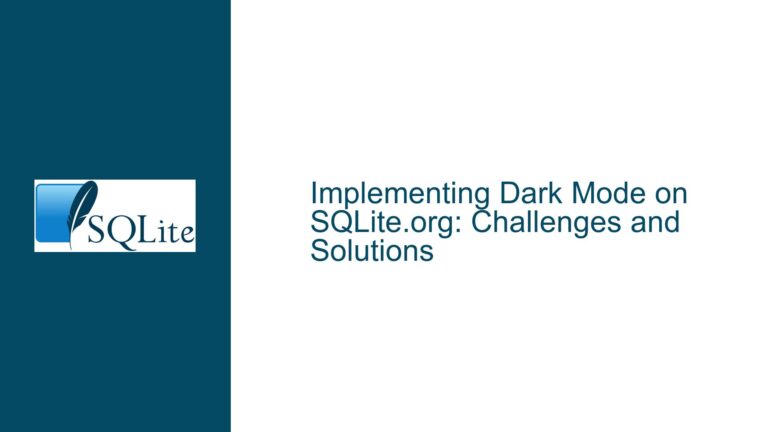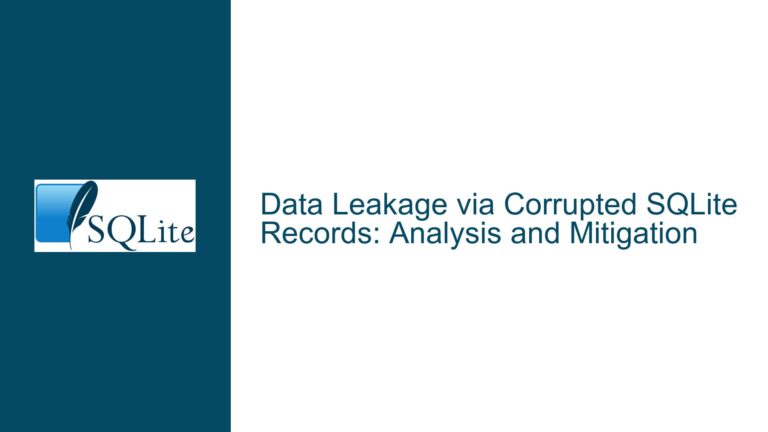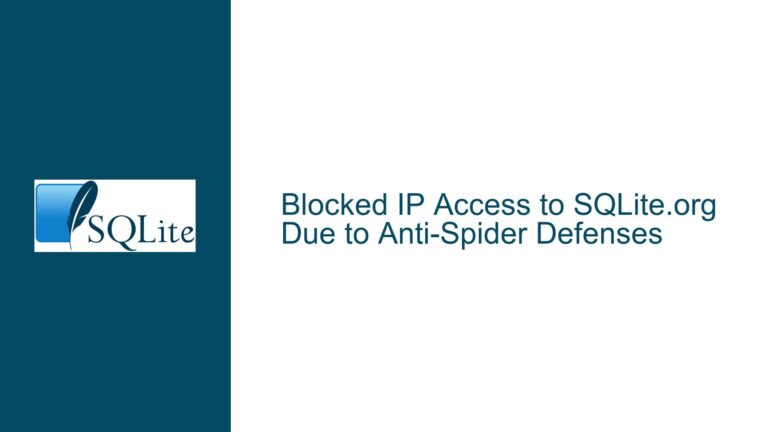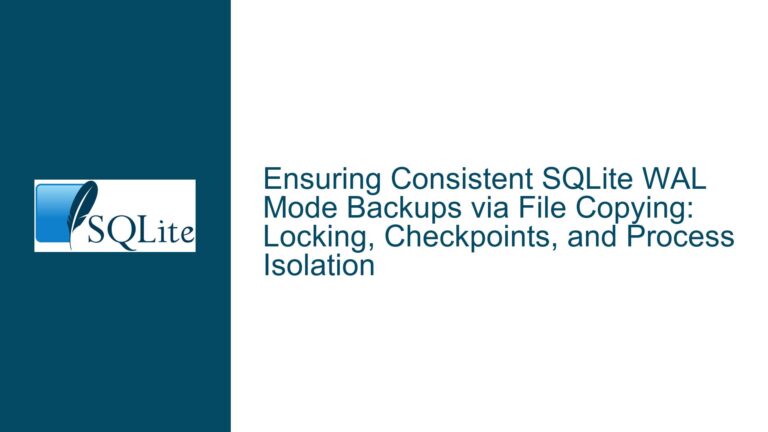SQLite SEE Release History, Encryption Features, and Alternatives Analysis
SQLite SEE Release Timeline and Core Encryption Capmentation
The SQLite Encryption Extension (SEE) is a proprietary add-on developed and maintained by the core SQLite team to enable transparent encryption of SQLite database files. First released in 2004, SEE has been a cornerstone solution for applications requiring robust data security without compromising SQLite’s lightweight, serverless architecture. Unlike third-party encryption tools, SEE integrates directly with the SQLite codebase, ensuring seamless compatibility with existing applications and future SQLite updates.
Release History and Evolution
SEE debuted alongside SQLite 3.0.0, aligning with the introduction of the SQLite 3 file format. Its initial release provided basic AES-128 encryption for database pages, with subsequent updates introducing AES-256, configurable ciphers, and support for multiple encryption keys. The extension has evolved in lockstep with SQLite’s development cycle, ensuring that encryption mechanisms remain synchronized with SQLite’s storage layer. For instance, SEE’s encryption operates at the page level, encrypting each database page individually before it is written to disk. This design minimizes performance overhead while maintaining compatibility with SQLite’s transactional guarantees.
Core Encryption Mechanism
SEE encrypts the entire database file, including schema metadata, user data, and temporary journals. The encryption is transparent to applications: developers interact with the database using standard SQLite API calls, with encryption/decryption occurring automatically during read/write operations. SEE employs a symmetric key model, where a single user-provided key is used for both encryption and decryption. Key derivation is handled internally using PBKDF2 (Password-Based Key Derivation Function 2), with configurable iteration counts to resist brute-force attacks.
Integration with SQLite
SEE is not a fork or a modified version of SQLite. Instead, it is a compile-time extension that replaces specific functions in the SQLite codebase responsible for writing and reading database pages. This tight integration ensures that SEE benefits from SQLite’s rigorous testing regimen, including the 100% MC/DC test coverage required for aviation and medical applications. The extension is available as a binary library or source code, licensed commercially through the SQLite Consortium.
Factors Contributing to Confusion About SEE’s Role and Alternatives
Ambiguity in Naming and Searchability
The term “SEE” (SQLite Encryption Extension) is inherently generic, making it challenging to locate authoritative documentation through search engines. Queries for “SQLite encryption” often prioritize third-party solutions like SQLCipher, which dominate open-source discussions. Furthermore, SEE’s commercial nature means its documentation is gated behind the SQLite Consortium’s membership portal, limiting public visibility. This contrasts sharply with SQLite’s core library, whose documentation is freely accessible and widely indexed by search engines.
Misconceptions About Licensing and Accessibility
Many developers assume that SEE is open-source or freely available, given SQLite’s public domain status. However, SEE is a proprietary product requiring a paid license. This disconnect leads to confusion when developers encounter encryption-related limitations in standard SQLite and seek solutions. Additionally, the prominence of SQLCipher—a free, open-source alternative—further muddies the waters, as users often conflate the two projects despite their divergent licensing and maintenance models.
Feature Overlap with SQLCipher
SQLCipher, developed by Zetetic LLC, provides similar page-level encryption for SQLite databases but operates as a fork of the SQLite codebase. While both SEE and SQLCipher offer AES-256 encryption and PBKDF2 key derivation, their integration strategies differ significantly. SQLCipher requires developers to link against a modified SQLite library, whereas SEE is a drop-in extension for the standard SQLite distribution. This distinction is critical for projects requiring strict adherence to upstream SQLite releases but is often overlooked in comparative analyses.
Resolving Encryption Requirements: Implementing SEE or Adopting SQLCipher
Evaluating Project Requirements
The choice between SEE and SQLCipher hinges on three factors:
- Licensing Constraints: Commercial projects with budget for dedicated support typically favor SEE, while open-source or cost-sensitive projects lean toward SQLCipher.
- Maintenance and Compatibility: SEE guarantees compatibility with all SQLite releases, as it is developed in tandem by the same team. SQLCipher, being a fork, may lag behind upstream SQLite updates, requiring manual merging of changes.
- Security Certification: SEE is validated for use in FIPS-compliant environments, whereas SQLCipher’s certification status varies by distribution and platform.
Implementing SQLite SEE
To deploy SEE, developers must first procure a license from the SQLite Consortium. The extension is distributed as a precompiled library or source code patch. Integration involves replacing the standard SQLite amalgamation with the SEE-enabled version and initializing encryption via the sqlite3_key API. For example:
sqlite3 *db;
sqlite3_open("encrypted.db", &db);
sqlite3_key(db, "my-secret-key", 14);
This key must be supplied every time the database is opened. SEE also supports key rotation via sqlite3_rekey, allowing developers to change the encryption key without downtime.
Adopting SQLCipher
SQLCipher requires replacing the standard SQLite library with its modified version. Build scripts (e.g., CMake, Makefile) must link against SQLCipher’s cryptographic dependencies, such as OpenSSL or LibreSSL. Initialization mirrors SEE’s workflow but uses PRAGMA statements instead of API calls:
PRAGMA key = 'my-secret-key';
SQLCipher’s open-source nature permits customization, such as altering the KDF iteration count or swapping encryption ciphers. However, such changes necessitate thorough testing to avoid compatibility issues.
Migration Strategies
Migrating an unencrypted database to SEE or SQLCipher involves attaching the plaintext database to an encrypted connection and exporting the schema and data. For SEE:
ATTACH DATABASE 'plaintext.db' AS plaintext KEY '';
SELECT sqlcipher_export('encrypted');
DETACH DATABASE plaintext;
For SQLCipher, replace sqlcipher_export with sqlcipher_export. This process ensures all data is re-encoded with the new encryption settings.
Performance Considerations
Both SEE and SQLCipher introduce marginal latency due to encryption/decryption overhead. Benchmarks show a 5–15% performance penalty for typical workloads, varying with cipher strength and KDF iterations. Mitigation strategies include offloading encryption to hardware accelerators (e.g., AES-NI) or optimizing KDF parameters to balance security and speed.
Long-Term Support and Upgrades
SEE users receive priority support from the SQLite team, including hotfixes for security vulnerabilities. SQLCipher relies on community support, with response times varying by issue complexity. When upgrading SQLite, SEE users can adopt new versions immediately, while SQLCipher users must wait for the maintainers to merge upstream changes—a process that can take weeks or months.
By aligning encryption choices with project requirements, developers can ensure data security without sacrificing SQLite’s hallmark simplicity and reliability.






